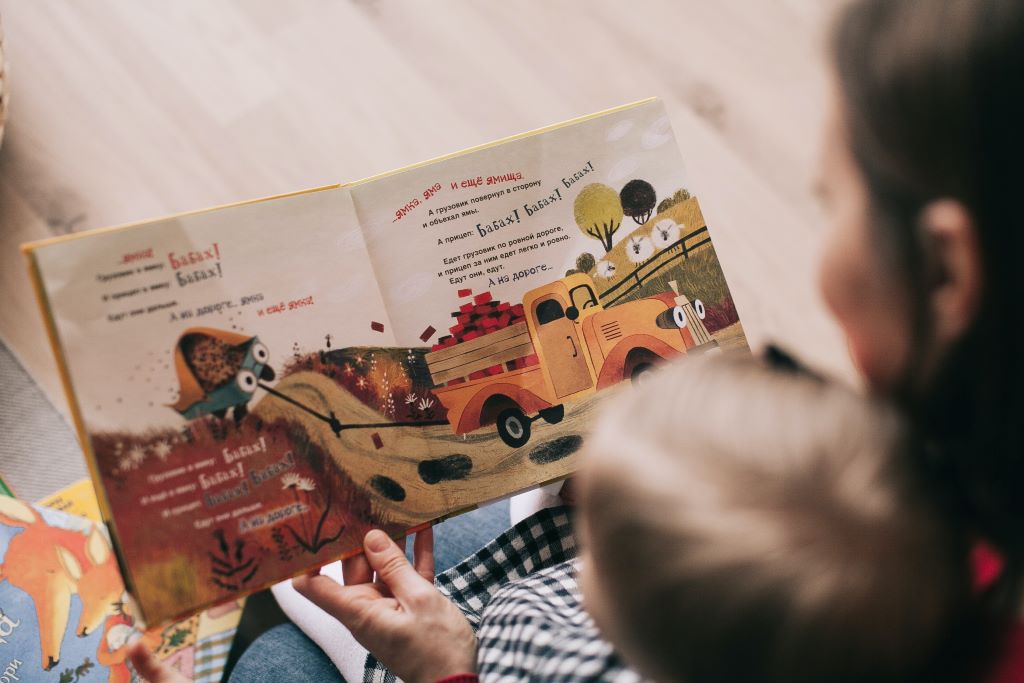
Communication, literacy and language skills are crucial in all aspects of life because they help initiate and maintain daily interactions. Literacy skills in particular are needed for writing and reading, and they include awareness of print and sounds of language, as well as the relationship between sounds and letters, vocabulary, understanding and spelling. This means that the development of these skills are indispensable milestones for young children, i.e. 0 – 7 years. Language development in children takes place when there is complex interaction between educators, guardians and their children. It helps if adults provide a literacy-rich environment and experiences to help with children’s literacy development. A number of researchers have agreed that language and literacy development gives way for full involvement in educational settings, makes technology use easier and evidently increases employment opportunities later on in life.
Promoting Language and Literacy Development
Imitation – Imitation is somewhat popular in certain aspects of child development. In fact children like to imitate behaviours and actions that they see. Additionally, when adults imitate the children’s version of an object’s name, they may be supporting children’s vocabulary growth, thus putting the importance of imitation in children in a clear picture. This means that adults should act as role models for children so that children would be able to emulate positive behaviours, including ones that enhance literacy and language acquisition. By reading newspapers, magazines or books in front of children, you would be showing them that reading is quite fun! You would be fostering interest and eagerness in children to get a book and read from it. Obviously, if the child is young, s/he might hold the book upside down and would also make up their own stories. Do not discourage this as this is their own way of reading.
Joint Storybook Reading – This activity includes the parent and the child sharing a reading experience. Reading a good book that contains rhymes, sounds, maybe a puppet, etc., would definitely leave an impact on children’s emerging early literacy due to allowing repetition and practice of concepts and phrases used in the text. Reading with your child can promote joint attention, which is when the readers (you and your child) share an experience of observation by pointing and following, as well as receptive and expressive language abilities. Joint storybook reading allows verbal interaction, such as relating the story to real-life experiences and predicting the conclusion. Using this method, parents would be helping children to obtain an appreciation for reading and healthy reading habits when reading aloud, and these would eventually reflect on the children’s academic success in relation to literacy.
Bedtime Reading and Singing – You can make a child’s bedtime routine more interesting by including reading and singing lullabies. These encourage children’s emotional-behavioural functioning and parent-child attachment, and also help children acquire a sense of self-confidence as well as a sense of mastery in relation to reading. Moreover, in particular study, it was noted that interaction between music and language may strengthen the development of both, while also fostering creativity in linguistic and musical expression.
Including Literacy in the Home Environment – Other activities that can be done in the home which promote language and literacy development include using alphabet puzzles and boards, and playing games related to rhyming, which can help the child handle different language sounds while working on early reading skills. Adding an alphabet carpet, wooden letter blocks, styrofoam letters and so on can help introduce literacy to your children. Labelling household objects, hanging and introducing different kinds of prints around the home, can help convey the message that literacy is everywhere and that it is an important factor in life. This can also be done when staying in a hotel or visiting a restaurant or supermarket, as the adult present can point at any signs like ‘pay here’, ‘exit’, ‘closed’, ‘open’ etc, and explain their meaning. When writing messages, shopping lists and letters, when looking at cookbooks and when you are engaging in other literacy-related activities, you can involve your children, as by doing so, children would learn that print communicates meaning.
Creating a Reading/Relaxation Corner – Although I know that at times space in the home environment can be quite limited, it can be very helpful if you create a reading area in a quiet corner at home. You can design this area in many ways, maybe adding a small tent with pillows, soft toys and a soft carpet. You can also add some dim fairy lights. However, it is important to note that having a variety of bright colours can distract and overpower the child, thus always choose neutral, pastel colours. Making this area as comfortable as possible will only make the child more enthusiastic about books, which would aid in learning new words and enhancing literacy and language development.
As previously mentioned in another article, acknowledgement can only do good, and this can also be applied to language and literacy development. In fact, children’s early language and literacy development is facilitated by the parent’s responsiveness, sensitivity and acceptance of the child’s behaviour. Additionally, a parent should provide organisation and structure, while creating such a climate at home.
References
Berk, L. E. (2012). Child Development (9th ed.). Pearson Education Limited.
Kurniasari, A. I., & Santoso, A. (2016). The teacher’s role in supporting the ZPD in students’ English oral communication skills based on the PYP language scope and sequence of grade EY 3A: A case study. Polyglot: Jurnal Ilmiah, 12(2), 1-23.
Light, J. (1989). Toward a definition of communicative competence for individuals using augmentative and alternative communication systems. Augmentative and Alternative Communication, 5(2), 137-144.
Light, J., & McNaughton, D. (2012). Supporting the Communication, Language, and Literacy Development of Children with Complex Communication Needs: State of the Science and Future Research Priorities. Assistive Technology; Assist Technol, 24(1), 34-44. https://doi.org/10.1080/10400435.2011.648717
Mascarenhas, S. S., Moorakonda, R., Agarwal, P., Lim, S. B., Sensaki, S., Chong, Y. S., Allen, J. C., & Daniel, L. M. (2017). Characteristics and influence of home literacy environment in early childhood-centered literacy orientation. Proceedings of Singapore Healthcare, 26(2), 81-97. https://doi.org/10.1177/2010105816674738
Mindell, J. A., & Williamson, A. A. (2018). Benefits of a bedtime routine in young children: Sleep, development, and beyond. Sleep Medicine Reviews; Sleep Med Rev, 40, 93-108. https://doi.org/10.1016/j.smrv.2017.10.007
Morrow, L. (2014). Literacy Development in the Early Years:
Helping Children Read and Write (7th ed.). Pearson Education Limited.
Ozturk, G., & Hill, S. (2020). Mother-child interactions during shared reading with digital and print books. Early Child Development and Care, 190(9), 1425-1440. https://doi.org/10.1080/03004430.2018.1538977
Roberts, J., Jurgens, J., & Burchinal, M. (2005). The Role of Home Literacy Practices in Preschool Children’s Language and Emergent Literacy Skills. Journal of Speech, Language, and Hearing Research; J Speech Lang Hear Res, 48(2), 345-359. https://doi.org/10.1044/1092-4388(2005/024)
Saracho, O. N. (2017). Parents’ shared storybook reading – learning to read. Early Child Development and Care, 187(3-4), 554-567. https://doi.org/10.1080/03004430.2016.1261514 Saracho, O. N., & Spodek, B. (2010). Parents and children engaging in storybook reading. Early Child Development and Care, 180(10), 1379-1389. https://doi.org/10.1080/03004430903135605

Christianne Marie Galea is currently reading for a B.A (Hons) in Early Childhood Education and Care at the Faculty of Education, University of Malta, which will lead her to become an early childhood educator. Her wish is to create an environment in which her class children will feel comfortable sharing their thoughts and emotions while expressing themselves freely.
In her free time Christianne loves creating art through mixed mediums such as water colours, acrylic, pencil colours and aquarelles. She also loves listening to music, acting and spending time with her sisters.
Click here to check out Christianne’s full bio as well as a list of all her Wham published articles





